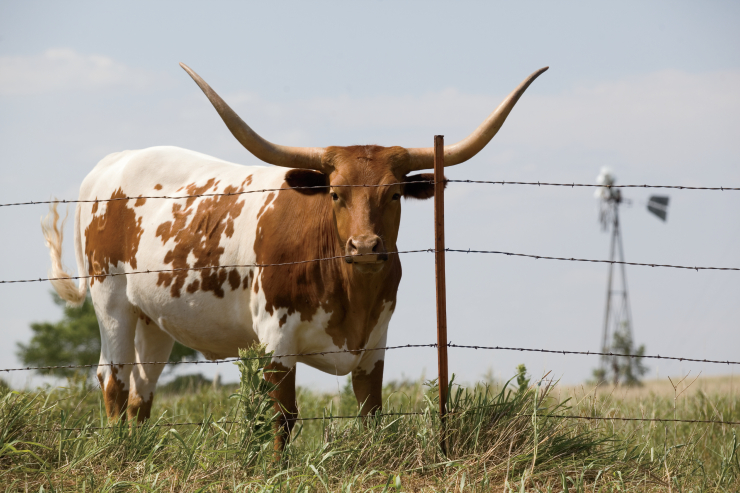Home > Texas > Texas Crops & Livestock > The Legendary Texas Longhorn
The Legendary Texas Longhorn
In partnership with: Texas Department of Agriculture

Spaniards first brought cattle to Texas in the 1500s. Some of those cattle escaped or were released into the range. They are the first ancestors of the legendary Texas Longhorn.
“Feral herds of Texas Longhorns underwent several centuries of natural selection in Texas,” says David Hillis, professor of integrative biology at The University of Texas at Austin.
Early Texas cattle developed disease resistance, including immunity to the tick-borne “Texas fever.” Feral longhorns also developed longevity, ease in calving and thrived on native vegetation, all while surviving droughts.
And those horns – long, even spiraling racks that can span up to six feet.
“Long horns were important for defense against predators, so cows with long horns left more offspring than did cows with short horns,” Hillis says.
Wild longhorns began to mix with English cattle breeds in the early 1800s. By the 1850s, Texas cattle were following trails to markets in New Orleans and California. Cattle were first shipped by rail to Chicago from Abilene, Kan., in 1867. Longhorns gained weight on the trail north from Texas.
“Before the widespread availability of supplemental feed or water from windmills, the only cattle that could thrive in Texas were longhorns,” says Hillis, who keeps a longhorn herd at Double Helix Ranch.
According to the Texas Historical Association, 5 to 10 million longhorns were trailed out of Texas for about 20 years after the Civil War, which provided a huge boost for Texas’ economy.
However, the longhorn’s natural advantages became less of a necessity as Texas ranchers established artesian wells and managed grazing with barbed wire.
Average horn spans on longhorns even declined in the late 1800s, likely from fewer older animals in the population, says Hillis.
Longhorns had nearly disappeared in the 1920s, when Congress established a national longhorn herd in Oklahoma, helping save the breed from extinction and preserving the breed that was vital in launching the Texas beef industry.
Today, some Texas ranches maintain longhorn herds to provide stock for rodeos and meat that satisfies a new type of consumer who craves ultra-lean, “heritage” beef.



